
95% of researchers rate our articles as excellent or good
Learn more about the work of our research integrity team to safeguard the quality of each article we publish.
Find out more
ORIGINAL RESEARCH article
Front. Phys. , 18 July 2024
Sec. Social Physics
Volume 12 - 2024 | https://doi.org/10.3389/fphy.2024.1425130
Regional innovation ecosystems (RIEs) are a new paradigm in innovation research, and the development of RIEs under digitization is constrained by the development of innovation environments. The study of ecological niche suitability of regional innovation environment provides the basis for the government to create an innovation environment suitable for the development of a regional innovation ecosystem. This paper conducts an empirical analysis based on panel data from 29 provinces (autonomous regions) in China from 2012 to 2021. The paper analyzes the suitability of the ecological niche of the innovation environment as well as the spatio-temporal evolution pattern of the regional innovation ecosystem under digitalization in China. The results of the study show that: (1) The innovation environment of regional innovation ecosystems under digitization in China has become increasingly suitable during the sample period. (2) From the perspective of evolution in time, the suitability of the ecological niche of the regional innovation environment has always maintained an evolutionary trend of rolling forward in the echelon. (3) From the perspective of spatial evolution, the center line of the curve of the development level of the suitability of the regional innovation environment shows a rightward shifting evolution.
Innovation is the primary driving force for development, and regional innovation is an important basis for supporting national innovation and development [1]. Currently, the regional innovative development model has evolved from a linear single model (innovation 1.0 stage) into an innovation system model (innovation 2.0 stage), and finally into an innovation ecosystem model (innovation 3.0 stage) [2, 3]. Systematic integration of innovation elements and enhancement of regional innovation ability has become the proposition of The Times [4]. At present, the development pattern of regional innovation space in China is still unbalanced. Digital technology and data resources, as a new type of production factor, are rapidly gaining ground in regional innovation activities. Digital sharing, openness, value-adding, and applications are profoundly affecting and changing the way regions innovate. Digitalization is emerging as a key driver of regional innovation [5]. Silicon Valley generates 3% of U.S. GDP and 13% of U.S. patents with less than 1% of the population [6]. Silicon Valley’s innovation ecosystem has the right kind of innovation environment that drives the healthy evolution of the entire regional innovation ecosystem. Each region accelerates the agglomeration of innovation factors according to its own endowment and industrial foundation. Building a regional innovation ecology is a key link in realising the development of a national innovation ecology. The cumulative turnover of technology contracts exported from Beijing to Tianjin and Hebei has exceeded 120 billion yuan. Zhongguancun enterprises have accumulated more than 8,300 branches in Tianjin and Hebei. On this basis, the High-end Industry Area of Beijing FTZ was formally established. The synergistic development of the innovation ecosystem in the Beijing-Tianjin-Hebei region has promoted the high-quality development of the economy of our economic zone.
The regional innovation ecosystem is an open system characterized by multi-body, multilateral relationships, and multi-level structure [7], and its evolution process is characterized by dynamics and complexity [8, 9]. The innovation environment is an important component of the regional innovation ecosystem. It includes innovation factors such as policies, institutions, culture, infrastructure, talent, and finance in the region, and the interactions and synergies between these elements. The quality of the innovation environment directly affects the level of development and efficiency of the regional innovation ecosystem, as well as its competitiveness and attractiveness. Digital technology can promote the structural optimization of the innovation environment, cultivate new industries and new forms of business, and enhance the quality and effectiveness of the innovation environment. It can also accelerate the openness and integration of the innovation environment, expand its external linkages and cooperation, and increase its impact and competitiveness [10, 11]. Therefore, regional innovation ecosystems need to continuously improve the institutional norms and technical support for digitization. It is creating a favorable environment for digital innovation. Better stimulate the sustainable development of regional innovation ecosystems.
Regional innovation ecosystems serve as the basic unit for the construction of national innovation systems. It also undertakes the important task of creating an innovative development region. Meanwhile, the innovation environment has a significant impact on the enhancement of ecological niche suitability of regional innovation ecosystems. In the context of digitization, the innovation activities of regional innovation ecosystems are faced with multidimensional challenges such as data collection, technology integration, talent supply, R&D investment, and data security. Meanwhile, in the process of digital development, digital technology can promote the structural optimization of the innovation environment, cultivate new industries and new types of business, and enhance the quality and effectiveness of the innovation environment. Therefore, the regional innovation ecosystem needs to continuously improve the institutional norms and technical support for digitalization to guarantee the healthy development of digital innovation and create a good digital innovation environment.
Currently, existing studies have developed a preliminary understanding of the connotation and structure of regional innovation ecosystems. In overall terms, existing research on the impact of digitization on regional innovation development focuses on the impact of regional digitization levels on innovation capacity, innovation efficiency, and high-quality economic development. But in the whole ecosystem, how does the innovation environment support the interaction and synergy of digital resources among the innovation agents in the system, so as to enhance the regional ecological niche suitability. This becomes an issue for regional innovation ecosystems in their future digital development. Based on this, this paper applies the ecological niche suitability theory to evaluate the ecological niche development status of regional innovation ecosystems under digitalization. On this basis, a spatio-temporal evolution analysis of the ecological niche suitability of regional innovation ecosystems under digitization in China is carried out by combining the evaluation results. Explore how the innovation environment can be supplied to drive the forward evolution of regional innovation ecosystems under digitalization. Enhance the innovation efficiency of the regional innovation ecosystem by improving the level of ecological niche suitability of the system. On this basis, the research findings of this article provide practical basis for the sustainable and healthy development of regional innovation ecosystems.
This paper innovatively starts from the perspective of the evolution of ecological niche suitability of innovation environment. It explores the role and significance of benign evolution of regional innovation ecosystem under digitalization. Based on the innovation ecosystem theory and ecological niche suitability theory, this paper reconstructs the evaluation index system of ecological niche suitability of regional innovation ecosystems under digitalization. We are measuring the ecological niche suitability of innovation environments in digitized regional innovation ecosystems in 29 provinces (autonomous regions) of China. Exploring how the supply of innovation environments in digitalized regional innovation ecosystems can drive the evolution of regional innovation ecosystems forward. Using ecological niche suitability levels to answer the question of whether the innovation environment of regional innovation ecosystems is truly suitable under digitization. To provide some theoretical basis for cracking the problem of unbalanced development of regional innovation efficiency under digitalization.
This paper is structured as follows: Section 1 Introduction; Section 2 literature Review. The relevant literature is reviewed. Section 3 Research Design. The model and method of the paper are described. Section 4 Empirical Results and Analysis. The results of empirical analysis are given. Section 5 Analysis of the Spatiotemporal Evolution of the Innovation Environment of Regional Innovation Ecosystems under Digitization. The results of this paper are discussed. And Section 6 Findings. Finally, the policy implications of this study and suggestions for future research are given.
Since Cooke (1992) proposed the concept of regional innovation systems and PCAST (2004) proposed the concept of innovation ecosystems, many scholars have defined regional innovation ecosystems from different perspectives [12–14]. Sun Bing et al. (2016) defined the regional innovation ecosystem from the perspective of the innovation subject as a dynamic system formed by the interaction of multiple subjects with enterprises as the core, collaborative innovation as the purpose, and cooperative symbiosis as the basis [15]. From the perspective of innovation resources, Butler et al. (2013) define regional innovation ecosystems as organic systems linked by different organizations, institutions, and other elements, which achieve a dynamic equilibrium with the help of resource flows such as capital and knowledge [16]. From the perspective of the innovation environment, Li Wan et al. (2014) defined a regional innovation ecosystem as a symbiotic competition, dynamic evolution, open and complex system formed by building links between various innovation clusters and innovation environment with material flow and energy flow in the district.
Regional innovation ecosystems are characterized by three aspects: First, the innovation main body synergistic cooperation, that is, by enterprises, colleges and universities, scientific research institutions, the government, and other main bodies linked to form a variety of clusters, different heterogeneous species and clusters in the dynamic evolution process of the system to form a symbiotic relationship of synergistic cooperation [2]. This ecosystem has interdependence [17]. Different species and institutions interact and relate to each other, and through mutually adapting synergies to fully utilize the motivation and dynamism of innovation agents. Second, innovative resource sharing and inclusiveness. Second, innovative resource sharing and inclusiveness. It refers to the innovation main body to obtain the heterogeneous resources needed for innovation, with the help of different cooperative modes, continuously drawing on external technology and other resources and interacting with them [18, 19]. In the process, energy is exchanged between the innovation subject and the innovation environment, and the compatibility of different resources is realized between the innovation subjects. Third, the dynamic evolution of the innovation environment. Refers to the fact that the evolution of regional innovation ecosystem structures and mechanisms requires the exchange of resources with the innovation environment. Innovation environment is the supportive environment needed by innovators to carry out innovation activities, including cultural environment and financial environment, etc., [20–22]. Some scholars believe that the innovation environment includes not only the cultural and financial environment but also the talent environment, the policy environment, the education environment, the business environment, and the openness of the market. Therefore, this paper defines the innovation environment as the institutional environment, technological environment, and market environment that provide innovation resources for the innovation activities of innovation subjects (innovation clusters).
In addition, there are scholars who have explored regional innovation ecosystems based on the case study of Silicon Valley. Hwang et al. (2012) found that Silicon Valley is like a “rainforest” that is constantly generating and evolving new digital technologies and new business models [23]. Silicon Valley’s success is due to its unique digital innovation ecosystem. Silicon Valley regional innovation ecosystem innovation environment support system for healthy and good sustainable operation. The Silicon Valley region builds a diversified service platform between innovative entities such as universities, research institutes, service organizations and enterprises, relying on new digital technologies. On this basis, a regional innovation ecosystem of mutual reinforcement and collaborative innovation has been formed [24].
The innovation environment of a regional innovation ecosystem is the sum of various material and non-material factors in the region that have a facilitating or inhibiting effect on innovation activities. It is an important part of the regional innovation ecosystem and an important influence on the evolution of the regional innovation ecosystem. The digital economy is developing at a high speed, and the application of digital technology is accelerating the restructuring of the regional and global economy. Digital transformation driven by a new generation of information technology, such as big data and cloud computing, has become an important support for the stable and coordinated development of the regional innovation ecosystem. The evolution of the innovation environment of regional innovation ecosystems under digitization is a dynamic process, which is influenced by a variety of internal and external factors [5, 25–27]. The evolution of the innovation environment of regional innovation ecosystems under digitalization has the following three characteristics and laws.
First, the innovation environment has moved from closed to open. With globalization and digitalization, regional innovation ecosystems and innovation environments are no longer confined within regions. The interaction between internal and external influences creates an open innovation ecosystem. An open innovation ecology enables regional innovation actors to utilize external innovation resources and improve innovation efficiency, while at the same time facing greater innovation challenges. Therefore, the openness of the system requires innovation agents to have stronger innovative and adaptive capabilities, as well as better innovation coordination and cooperation [11]. Second, the innovation environment has moved from monolithic to pluralistic. The diversified innovation environment provides innovation subjects with a wider range of innovation options, and at the same time increases the complexity of the innovation environment. Therefore, the diversification of the innovation environment of regional innovation ecosystems requires innovation subjects to have higher innovation judgment and decision-making ability, as well as stronger innovation synergy and integration ability [28]. Third, the innovation environment has moved from static to dynamic. A dynamic innovation environment provides regional innovation actors with more flexible innovation space and mechanisms. It also brings faster innovation changes and pressures. Thus, dynamism requires innovation agents to have more agile innovation responses, as well as more rapid learning capabilities.
The evolution of the innovation environment has a significant impact on the renewal and iteration of regional innovation ecosystems under digitization. This is mainly reflected in the following three areas: First, the evolution of the innovation environment can promote the sharing and flow of innovation resources. It enhances the collaboration and linkage of innovation subjects and stimulates innovation vitality and creativity. Digital technologies can provide more data, more material, and inspiration for innovative activities. Li H et al. proposed a new Markov clustering method. In dynamic networks, Markov clustering methods can be used to optimize different quality measures [29]. Y. Li et al. proposed a method called HGV4Risk through the use of digital technology. It enables better risk forecasting [30]. Tahereh describes the important role played by inductance in superconducting circuits in rapid single flux quantum (RSFQ) systems [31]. At the same time, digital technology can also provide diversified tools to provide more opportunities and facilities for innovative activities.
Scholar Leibold (1957) was the first to research niche suitability based on Hutchinson’s “N-dimensional hypervolume niche” theory. Research indicates that the survival of species within a certain specific area is inevitably the result of the combined effects of various environmental factors, including time and space. By measuring various environmental elements, an N-dimensional spatial coordinate system is constructed. Different species select N-dimensional resources based on their own survival and development needs, a process that signifies the changing patterns of ecological niche suitability [32]. Domestic scholars, led by Li Zizhen in 1993, were the first to construct a theory and measurement model of ecological niche suitability based on the theory of ecological niches, providing a measurement tool for the quantitative study of regional innovation ecosystems. The model reflects the current state and sustainable innovation capacity of the entire regional innovation ecosystem by measuring the proximity between the actual ecological niche of the innovation entity and the optimal ecological niche [33]. The proposal of the niche suitability measurement model has enabled the quantitative research of regional innovation ecosystems, advancing the cross-application of niche theory in the field of innovation [34]. It has facilitated the extended application of niche suitability in various disciplinary fields, broadening the research scope and depth of the theory of ecological suitability [35, 36]. Meanwhile, scholars have explored the impact studies on the ecological suitability of regional innovation ecosystems. Liu Hongjiu et al. (2013) found that the ecological suitability of regional innovation ecosystems significantly affects GDP levels and the output value of high-tech industries [37]. It promotes the enhancement of innovation efficiency during both the knowledge innovation phase and the product innovation phase [38]. Li Xiaodi et al. (2018) demonstrated that the innovative elements within regional innovation ecosystems, as well as the mechanisms of interaction formed between these elements, play a positive role in enhancing regional innovation performance [4]. The ecological suitability of regional innovation ecosystems has an undeniable impact on innovation efficiency.
Existing studies utilize niche and ecological suitability theories to investigate the suitability level of a particular regional innovation environment or the development of a regional innovation ecosystem. However, no scholars have constructed innovation environment indicators based on regional innovation ecosystems and niche suitability theories. And with this, to study the suitability level of the innovation environment in our country’s regional innovation ecosystems under digitalization. Therefore, this paper attempts to examine from the perspective of the evolution of ecological niche suitability in the innovation environment. Discussing its role and significance in the positive evolution of regional innovation ecosystems in the context of digitalization.
This article conducted a Paired Samples t-test on data from 29 regions in China using IBM SPSS Statistics 27 software. The null hypothesis of this paper is that there is no difference between the two regions, while the alternative hypothesis is that there is a difference between the two regions. On this basis, the test was conducted for 29 regions. The results show that the p-value of each test is far less than 0.05. The null hypothesis is rejected. There are significant differences in the innovation environment between regions.
The innovation environment is an integral component of the regional innovation ecosystem. The innovation environment encompasses innovative elements within the region, including policies, institutions, culture, infrastructure, talent, and funding. As well as the interactions and synergistic effects among these elements. The quality of the innovation environment directly affects the development level and efficiency of the regional innovation ecosystem, as well as its competitiveness and attractiveness. Digital technology can enhance the level of informatization in an innovative environment. Promote the sharing and flow of innovative resources. Enhance the collaboration and linkage of innovation entities. Thus stimulating the innovative vitality of the system. Digital technology can also drive the structural optimization of the innovative environment. This can also accelerate the open integration of the innovation environment. Expand the external connections and collaborations of the innovation environment to enhance its influence and competitiveness [9, 10]. The development of digital regional innovation ecosystems also requires the support and assurance of an innovative environment. The innovation environment encompasses elements such as economic drivers, socio-cultural aspects, technological innovation, and institutional support within the region (As shown in Figure 1), and synergies between elements. Therefore, the regional innovation ecosystem needs to continuously improve the institutional norms and technical support for digitalization, to guarantee the healthy development of digital innovation. Create a favorable environment for digital innovation.
The data on regional innovation ecosystems under digitization has become more comprehensive and informative since 2012. Meanwhile, some data are missing for Xinjiang, Tibet, Hong Kong, Macao and Taiwan. So, based on data accessibility and consistency of statistical standards. This paper selects 2012–2021 as the sample interval. And 29 provinces in China (excluding Hong Kong, Macao, Taiwan, Xinjiang and Tibet) are selected as the research sample. Attempts were made to study the level of ecological niche suitability of the regional innovation environment on the basis of indicator data from 29 provinces (autonomous regions). And on the basis of analyzing the environmental supply and demand, it provides certain reference for local governments to formulate policies related to digital development. This paper uses data from official reports published by the Chinese government, including the China Science and Technology Statistical Yearbook, the China City Statistical Yearbook, and the Wind Consulting Database. Use interpolation to complete a single missing data.
This paper takes 29 provinces (autonomous regions) regions in China as the research object. This study compares the ecological niche suitability and evolutionary momentum of innovation environments in different regional innovation ecosystems in China. Judging the continuous iteration of the process of digitization of regional innovation ecosystems driven by the innovation environment in each region. Using the level of ecological niche suitability of innovation environment to answer the degree of “suitability” of regional innovation environment. And it presents a broad development trend of the niche suitability of China’s regional innovation ecosystem.
This paper constructs the evaluation index system of ecological niche suitability of regional innovation ecosystem innovation environment under digitalization in Table 1. Based on the concept of PEST analysis first introduced by British scholar Francis J. Aguilar in his book Scanning the Business Environment in 1967. PEST analysis categorizes the business environment in which a company operates into four dimensions: political, economic, social, and technological. In particular, digitalized regional innovation ecosystems involve the synergistic development of multiple regions. There is a need to strengthen communication and coordination among government departments, formulate unified planning and policies, break down barriers to factor mobility, and promote interregional policy synergies. At the same time, the government should also strengthen the regulation and guidance of digital innovation, safeguard data security and privacy, and maintain the healthy development of the digital innovation ecosystem.
The digital economy innovation environment drives the spread of digital technologies. The new digital infrastructure is the foundation for promoting the deep integration of digital innovation and the digital economy in the region [39]. At the same time, the economy drives the intelligent operation of the industrial chain of the regional innovator [40]. Positive externalities of digital infrastructure can lead to a more fluid interaction of digital technologies and knowledge between regions [41]. The development of digital infrastructure has narrowed the space and time distance between innovators. Overcome the negative effects of information and knowledge asymmetry. To alleviate the unbalanced flow and distribution of innovation resources in the regional innovation ecosystem and improve the innovation efficiency of the regional innovation ecosystem under digitalization. On this basis, this paper refers to the relevant literature (Liu Jun et al., 2020) [42] and combines the available data at the regional level. This paper establishes a multidimensional evaluation system composed of three secondary indexes: regional mobile phone penetration rate, regional broadband Internet access port, and regional long distance cable line length to measure the regional economic driving force dimension.
With the rapid development of information technology and the popularization of the Internet, people can communicate and interact with people around the world in real time through various digital platforms and tools. This new social culture broadens our horizons and ways of thinking. At the same time, we should accelerate the cultivation of a group of talents who are good at promoting the digitalization of culture. Strengthen the research on the theory and practice of cultural digitization. It will provide a strong guarantee for enhancing regional digital social and cultural service capabilities [43]. On this basis, this paper draws on the methodology of Zhao T et al. (2020) [44]and Liu Jun et al. (2020) [45]. This article measures Internet development at the city level. Indicators are used in two areas: Internet penetration and the profile of the relevant workforce. The above two indicators correspond to the actual content of this paper: the proportion of Internet broadband users per 100 population in the region, and the proportion of employees in the computer service and software industries in urban units.
The digital economy is gradually becoming an important strategic lever and new driving force for optimizing industrial structure and maintaining high-speed economic growth. The core of the digital regional innovation ecosystem is the innovation and application of digital technology. Digital technology includes emerging technologies such as blockchain, artificial intelligence, 5G, cloud computing, and the Internet of Things. These technologies can not only promote the generation, application, and dissemination of digital innovation, but also empower innovation and transformation in traditional industries. Realize digital industrialization and industrial digitization. Meanwhile, digital technology innovation can accelerate the export of innovative elements such as technology and talent from upstream to downstream in the global value chain, breaking through technological bottlenecks. At the same time, accelerating the spillover and diffusion of technology within the domain is conducive to achieving cross regional knowledge and technological element sharing among industries. On this basis, this article refers to relevant literature such as Sun Li et al. (2021) [46] and Yang H et al. (2022) [47]. This article uses “Regional Internal Expenditures on R&D Funding- Electronics and Communication Equipment Manufacturing Industry,” “Number of regional digital economy patent applications” and “technology market technology flow to the region (contract amount)” to measure the level of digital technology development in the region.
The development of the Digital Inclusion Index is now significantly influenced by policy guidance and regulatory support. The Chinese government has introduced a series of policy measures, including the “Plan for Promoting the Development of Inclusive Finance (2016–2020).” This Plan clarifies the definition of inclusive finance and proposes the concept of developing inclusive finance. These policies aim to promote universal access to financial services by improving financial infrastructure, strengthening the financial system, and providing policy guidance and support. The inclusive digital finance also benefits from the advancement of financial technology, especially the application of big data and artificial intelligence technology. These technologies make financial services easier to access and more precise. On this basis, this article uses the China Digital Inclusive Finance Index and the Regional Digital Economy Index to measure the development status of regional digital ecology. The index was compiled by the Digital Finance Research Center of Peking University and Ant Financial Group [48].
This paper adopts the entropy value method to measure the suitability of the ecological niche of the innovation environment of the regional innovation ecosystem under digitalization. Its basic principle is to determine the objective weights based on the magnitude of the variability of the indicator. The concept of entropy has a wide range of applications in the study of information systems, theoretical chemistry and socio-economics. In general. The lower the information entropy of an indicator, the greater its degree of variability, the more informative it is, and the greater its weight. Conversely. The greater the information entropy of the indicator, the greater his degree of variability, the amount of information and weight decreases with it.
The specific steps of the measurement model construction are as follows:
Constructing an original indicator matrix for measuring the ecological niche suitability of innovation environment in regional innovation ecosystems under digitization, which
Dimensionless standardization of raw data using the great value method. Get the matrix
The entropy weighting method was used to calculate the entropy value of each ecological niche factor
First, the entropy value
Which,
Second, the redundancy
Finally, the entropy value of each ecological niche factor was calculated, Weighting values for combined ecological niche suitability, Weighting values when ecological niche element suitability component,
Construct the ecological niche suitability model of the innovation environment and the component suitability model of each ecological niche element, as shown in Eqs 6–8:
In Eq. 6,
Measuring the suitability and ranking of the ecological niche of the innovation environment in each province. The evolutionary momentum model is used to measure the evolutionary momentum value and ranking of the innovation environment in each province [49]. Evolutionary momentum quantifies the strength of the convergence effect on the optimal ecological niche using the deviation between the “real ecological niche” and the “optimal ecological niche” [50]. The further the “realistic ecological niche” deviates from the “optimal ecological niche,” the stronger its convergence effect. The greater the value of the evolutionary kinetic energy, the greater the room for evolution and enhancement [51]. Therefore, the evolutionary space of the ecological niche of the innovation environment in each province can be measured based on the value of evolutionary momentum obtained by the measure.
First, the great value method was used to standardize the raw data without dimension using Eq. 1. The results of the calculations are shown in Table 2 (using 2012 as an example).
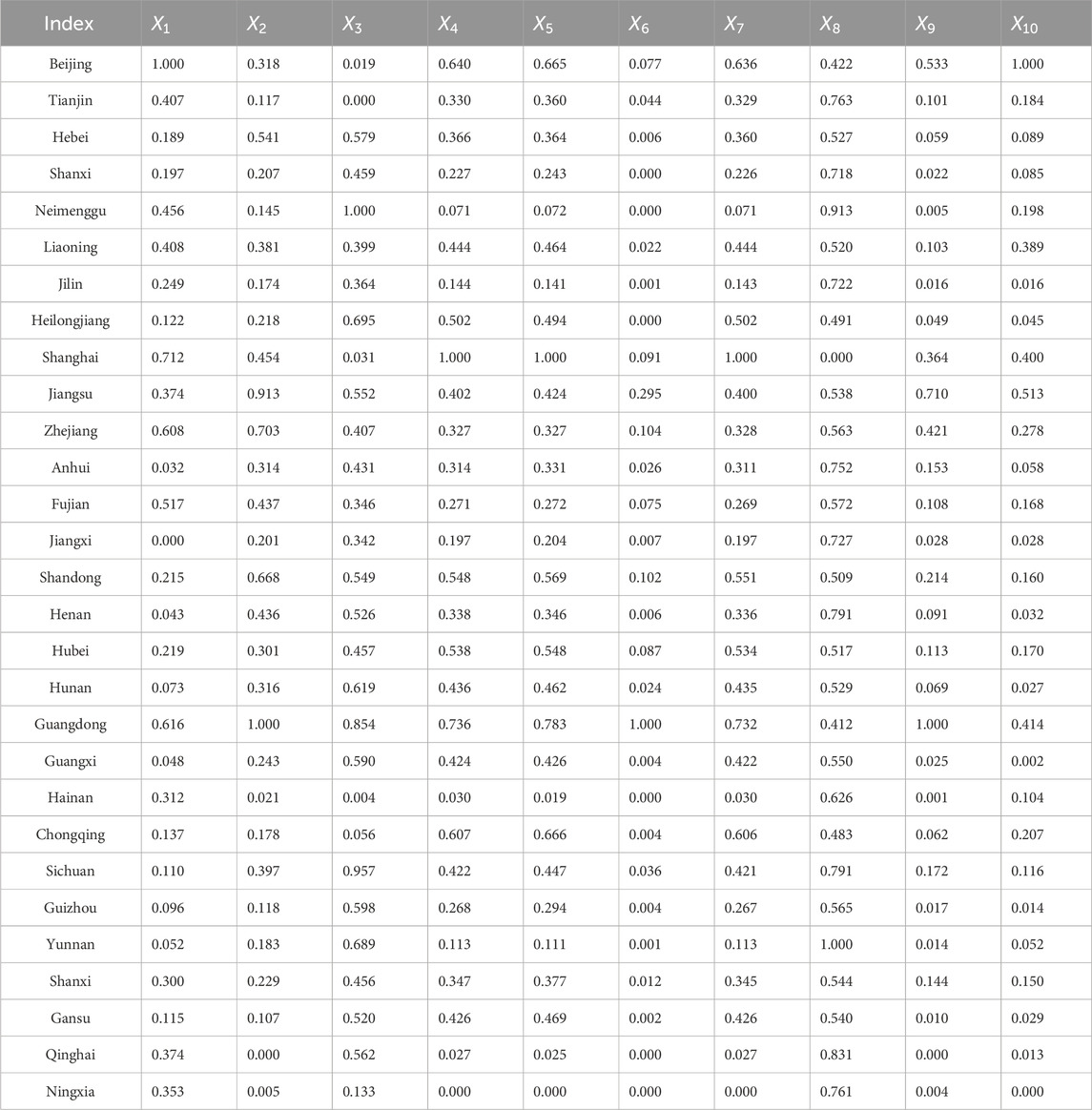
Table 2. Standardized values of evaluation indicators for ecological niche suitability of innovation environment.
Next, the entropy value of each ecological niche factor was calculated using the entropy weight method. The results are shown in Table 3.
The weight values of the ecological niche suitability of the innovation environment of the regional innovation ecosystem under the digitization of each province are calculated separately. On this basis, the weight value of each ecological niche element suitability component is calculated. The specific values are shown in Table 4.
Then, the value of
The calculated values and the weight coefficients of each ecological factor are simultaneously substituted into the ecological niche suitability measurement model (Eq. 6). Calculate the measured values of ecological niche suitability and evolutionary momentum of the innovation environment of regional innovation ecosystems under the digitization of 29 provinces. The specific measurement results and corresponding rankings are shown in Table 5.
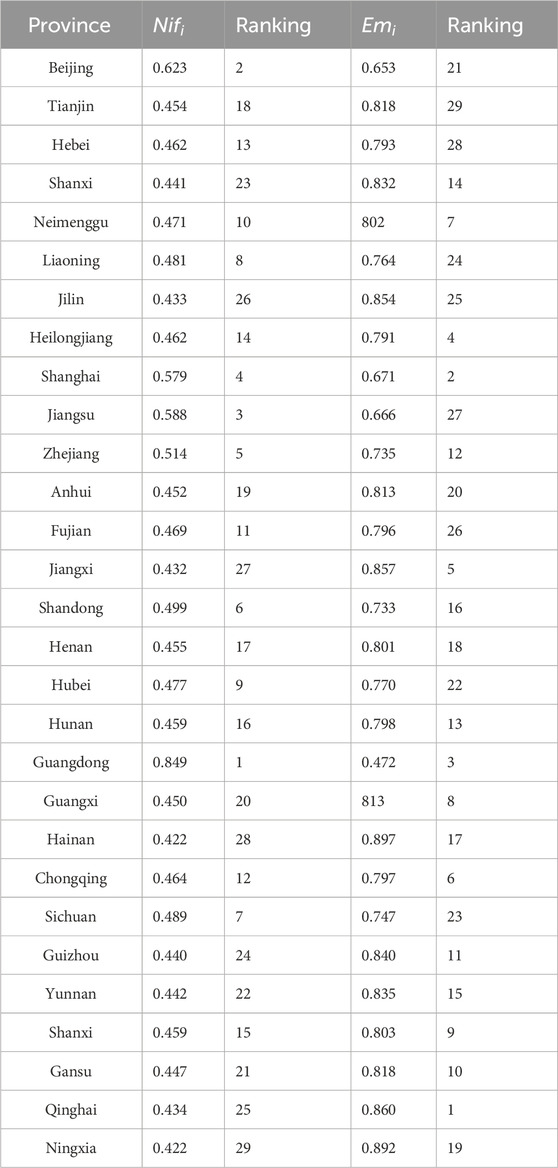
Table 5. Standardized values of evaluation indicators for ecological niche suitability of innovation environment.
Finally, based on the above calculation steps, the indicator data of each provincial region are substituted into the corresponding formula according to the order of calculation. The results of measuring the suitability and evolutionary momentum of the ecological niche of the innovation environment of regional innovation ecosystems under digitization from 2012 to 2021 are obtained as shown in Table 6.
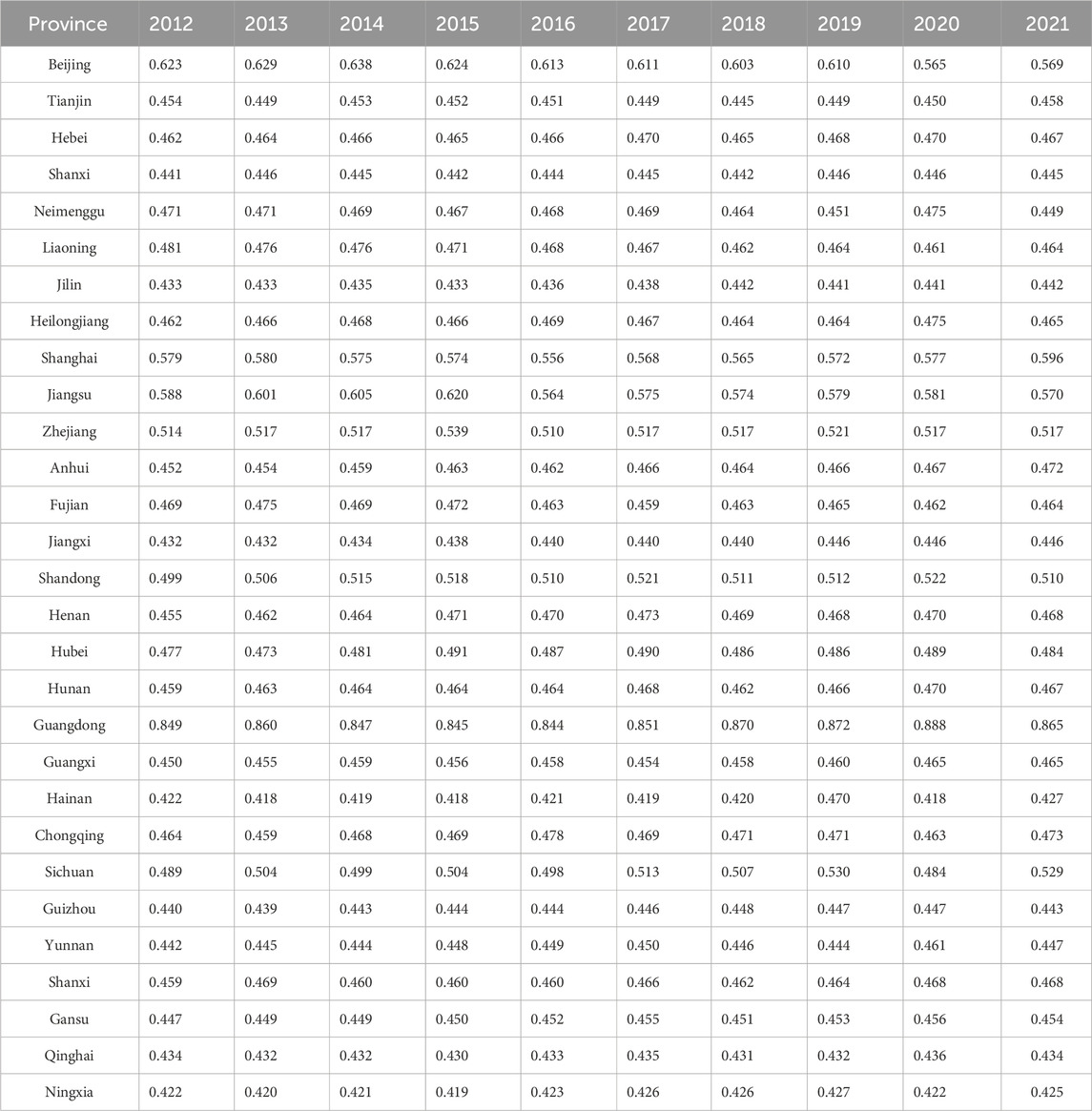
Table 6. Measurement results of ecological niche suitability of regional innovation ecosystem innovation environment under provincial digitization from 2012 to 2021.
Furthermore, the ecological niche suitability measurement results of the innovation environment of regional innovation ecosystems under digitization in each province are substituted into the corresponding formula in the order of calculation. The measurement results of the evolutionary momentum of the innovation environment from 2012 to 2021 are obtained as shown in Table 3.
Based on the above ecological niche suitability model, this paper measures the values of ecological niche suitability and the evolutionary momentum of the innovation environment in 29 provinces (autonomous regions) from 2012 to 2021. Based on empirical results. The ecological niche suitability of the innovation environment of regional innovation ecosystems under digitization shows a clear gradient decreasing trend from the east to the center, northeast, and west. The average value of the ecological suitability of the innovation environment of regional innovation ecosystems under digitization in the country is 0.488. Among them, the average value of ecological suitability of the innovation environment in the eastern region is 0.547. Except for Tianjin (0.451), Hebei (0.466), Fujian (0.466), and Hainan (0.425), where the ecological suitability of the innovation environment does not meet the national average. Beijing (0.608), Shanghai (0.574), Jiangsu (0.586), Zhejiang (0.519), Shandong (0.512), and Guangdong (0.859) exceeded the national average in terms of the ecological suitability level of the innovation environment and led the way. The average value of ecological suitability of the innovation environment in the central region is 0.460. Among them, only Anhui (0.463), Henan (0.467), and Hubei (0.484) reach the average value of ecological niche suitability of innovation environment of regional innovation ecosystems under digitization in the central region. The average value of ecological niche suitability of innovation environment in the Northeast region is 0.458, overall lower than the central region and national average. Although the ecological niche suitability level of the innovation environment in Liaoning Province is better than that of Jilin Province and Heilongjiang Province, it still falls short of the national average. The average value of ecological suitability of the innovation environment in the western region is 0.456. Among them, the ecological suitability of the innovation environment in Sichuan Province reaches 0.506, which is significantly higher than the national average level, and shows obvious differences with other western provinces. In this paper, the ecological niche suitability and evolutionary momentum of each region are obtained, as shown in Table 7. The results show that the ecological niche suitability of China’s innovation environment shows a decreasing trend from the east to the west. The evolutionary momentum shows that the central region is the largest, the eastern and northeastern regions are closer, and the western region has a lower value of evolutionary momentum and a relatively large gap with other regions.
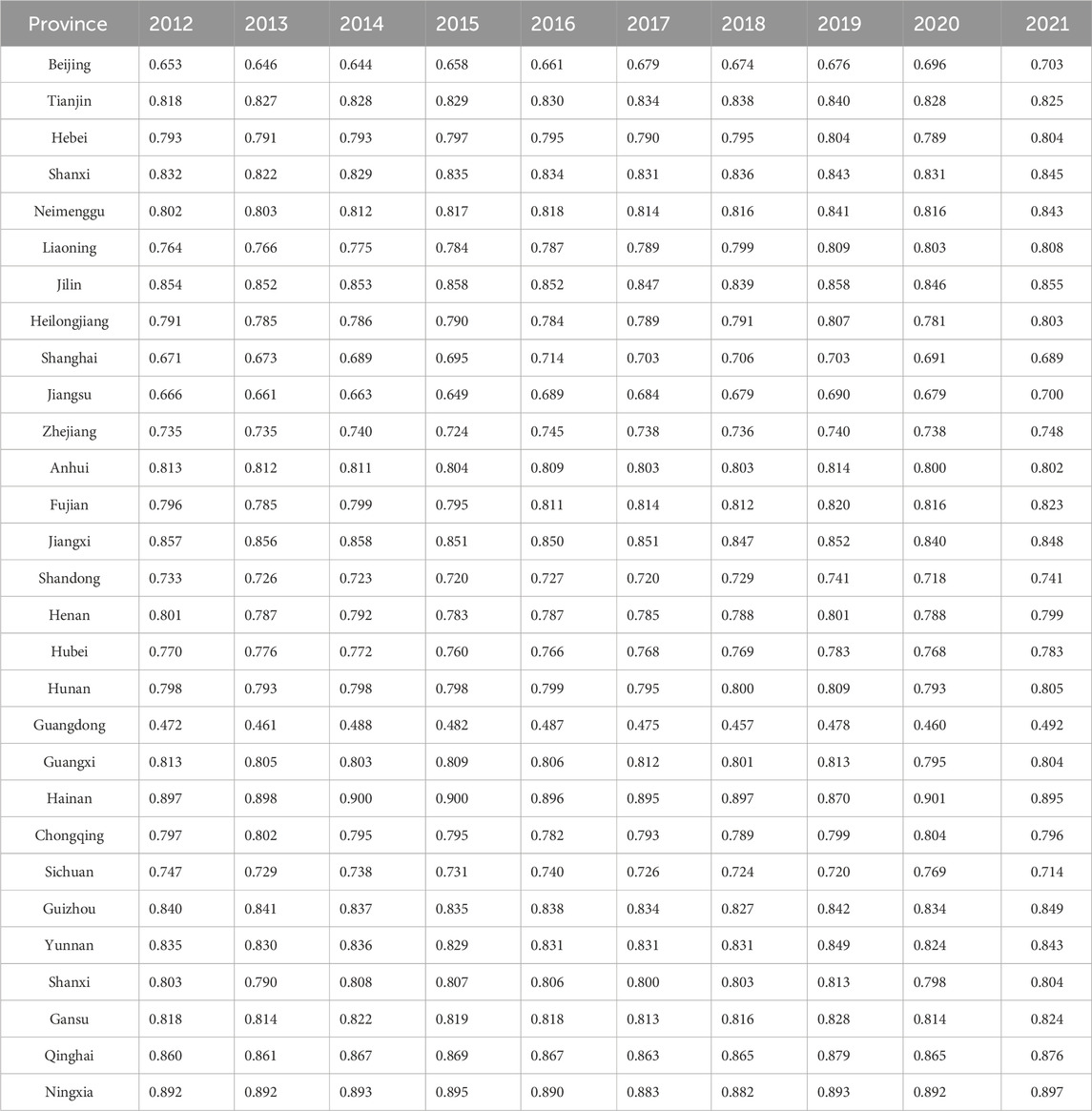
Table 7. Measurement results of the evolution momentum of regional innovation ecosystem innovation environment under provincial digitalization from 2012 to 2021.
To explore the regional distribution pattern of ecological niche suitability and evolutionary momentum of innovation environment in regional innovation ecosystems under digitization. The ecological suitability and evolutionary momentum of the innovation environment of the provinces included in each region are averaged. The ecological suitability and evolutionary momentum of the innovation environment in each region are obtained. As shown in Figure 2; Table 4. Based on research needs. The economic regions of China are divided into four major areas: the East (Beijing, Tianjin, Hebei, Shanghai, Jiangsu, Zhejiang, Fujian, Shandong, Guangdong, Hainan), the Center (Shanxi, Anhui, Jiangxi, Henan, Hubei, Hunan), the West (Inner Mongolia, Guangxi, Chongqing, Sichuan, Guizhou, Yunnan, Tibet, Shaanxi, Gansu, Qinghai, Ningxia, Xinjiang) and the Northeast (Liaoning, Jilin, Heilongjiang). Hong Kong, Macao, Taiwan, Xinjiang, and Tibet are not included in this paper.
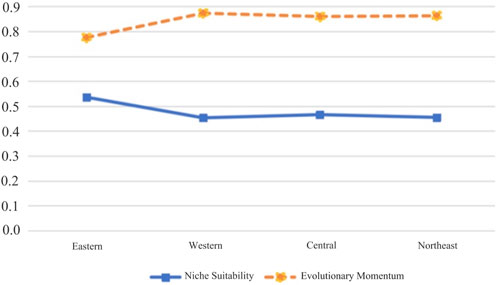
Figure 2. Ecological niche suitability and evolutionary momentum evolution trends of regional innovation ecosystem innovation environment under digitization from 2012 to 2021.
The ecological niche suitability model reflects the geometric proximity between the “real ecological niche” and the “optimal ecological niche” of the innovation ecosystems in each province or region. The suitability of innovation resources for system development provides a practical basis for the evolution and upgrading of the system’s innovation environment. Based on Table 8, it can be seen that the ecological suitability of the innovation environment of regional innovation ecosystems under digitalization in China from 2012 to 2021 shows a decreasing trend from the eastern region to the northeastern region. The regional innovation ecosystem under digitization in the eastern region has the highest ecological suitability of the innovation environment at 0.547, followed by the eastern region (0.460), the northeastern region (0.458), and the western region (0.456).

Table 8. Evolution trend of niche suitability and evolutionary momentum of the innovation environment in regional innovation ecosystems under digitalization from 2012 to 2021.
To further demonstrate and analyze the spatial evolution pattern of ecological niche suitability of innovation environment. This paper considering the characteristics of the value domain of the ecological suitability score of the innovation environment in each province in the measurement period. In this paper, with the help of ArcGIS 10.2 software, spatial grading is performed using the isometric grading method. The visualization area is shown in Figure 3.
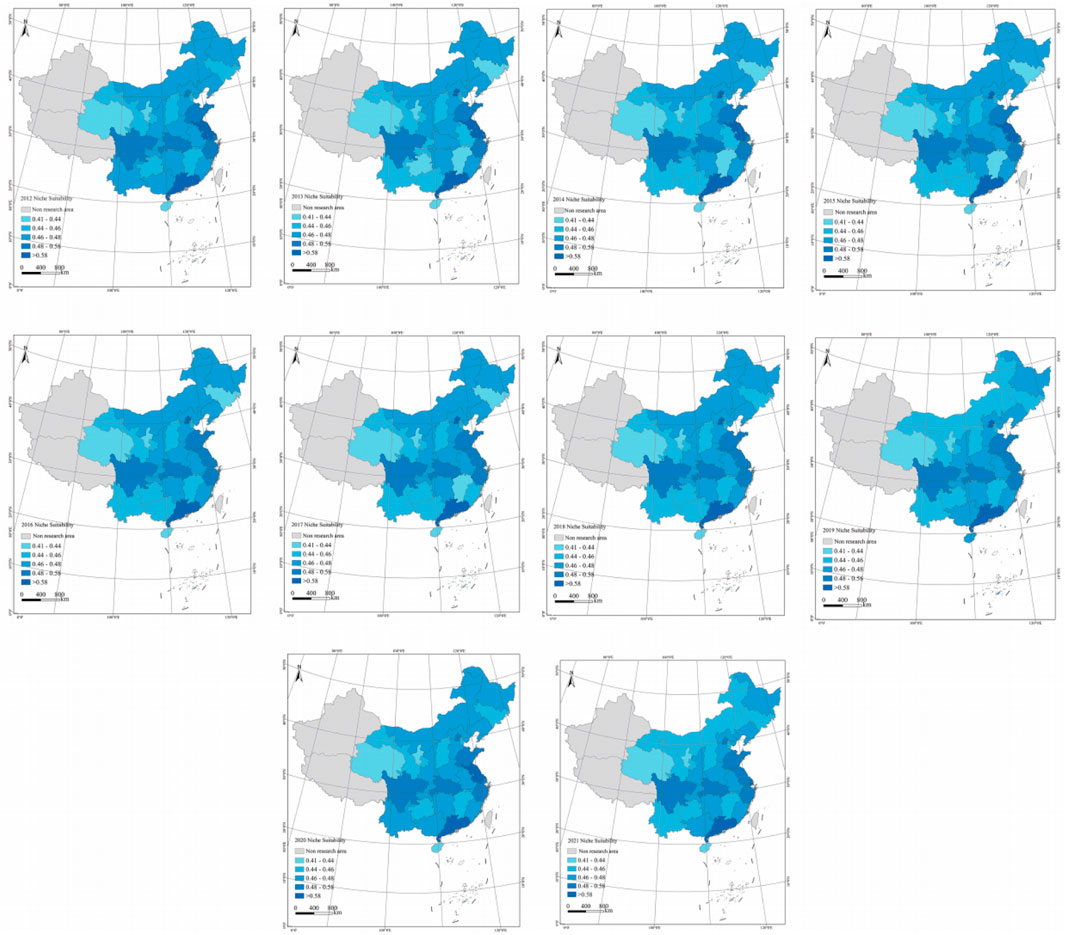
Figure 3. Spatial evolution pattern of niche suitability of innovation environment in regional innovation ecosystems under digitalization from 2012 to 2021.
As can be seen from Figure 3, the spatial evolution pattern of ecological niche suitability of innovation environment of regional innovation ecosystem under digitalization has the following characteristics: First, from the evolutionary perspective of time. China’s provinces (autonomous regions) innovation environment ecological niche suitability as a whole maintains a rolling evolutionary trend toward the forward echelon. The overall situation shows that the strongest is always stronger (e.g., Jiangsu, Guangdong, Beijing, Zhejiang, Shanghai, and other provinces and cities in the eastern region). Second, in terms of geospatial distribution patterns. The ecological niche suitability of the innovation environment decreases from southeast to northwest. These two main features are present in time and space throughout the measurement period. It highlights the problem of unbalanced and insufficient development revealed in the construction and evolution of China’s digital innovation environment. Therefore, it is necessary to rely on the construction of an innovation environment to promote the integration of innovation resources in regional innovation ecosystems. In order to realize the sustainable development of innovation ecosystems in each province.
Kernel density estimation is a nonparametric estimation method. It has strong stability and also weak dependence on the model. Kernel density estimation method as a universal tool for the analysis and dynamic evolution of regional differences. The kernel density estimation method characterizes the development of the study object by portraying its distribution pattern, evolutionary trend, and ductility. In this paper, using MATLAB 2021b software and taking the Gaussian kernel density function, the Kernel density assessment and analysis of the development level of China’s innovation environment. The formula is:
where
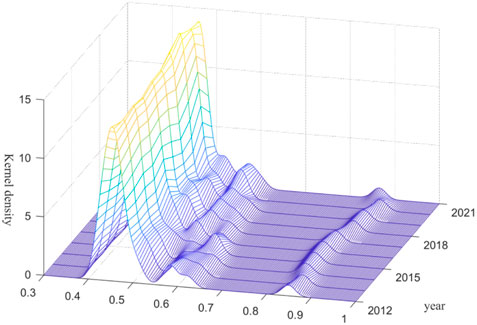
Figure 4. Dynamic evolution trend of innovation environment suitability of regional innovation ecosystem under national digitalization.
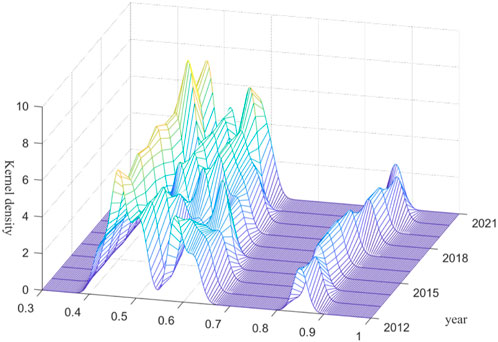
Figure 5. Dynamic evolution trend of innovation environment suitability of regional innovation ecosystem under digitalization in eastern China.
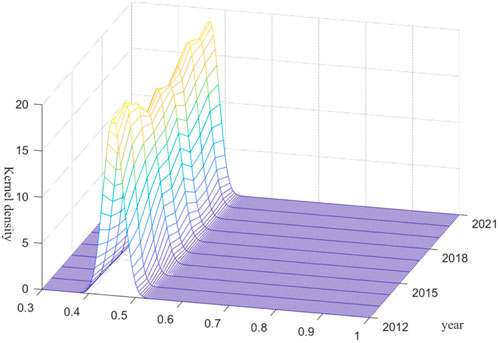
Figure 6. Dynamic evolution trend of innovation environment suitability of regional innovation ecosystem under digitalization in central China.

Figure 7. Dynamic evolution trend of innovation environment suitability of regional innovation ecosystem under digitalization in western China.
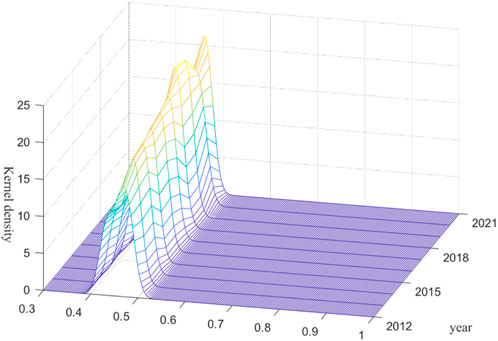
Figure 8. Dynamic evolution trend of innovation environment suitability of regional innovation ecosystem under digitalization in Northeast China.
As shown in Figure 4, from the movement of the wave peak, the center line of the curve of the development level of the innovation environment suitability of China’s digitalized regional innovation ecosystem during the sample period shows the evolution trend of moving to the right. This indicates that the overall development level of innovation environment suitability of regional innovation ecosystems under digitalization in China has gradually improved. From the distribution pattern, after 2012, the main peak value of the development level of innovation environment suitability of China’s digitalized regional innovation ecosystems shows the evolution trend of “peak value rising, width narrowing.” This indicates that the overall development level of China’s innovation environment suitability has increased, and the differences in the development level of each region are narrowing. From the perspective of distribution extensibility, the kernel density line of the development level of China’s innovation environment suitability from 2012 to 2021 shows the characteristic of “trailing on the right and widening in extensibility,” which indicates that the development level of the innovation environment in some provinces has a bigger gap with that of other provinces.
As shown in Figure 5, from the movement of the wave peak, the center line of the curve of the development level of innovation environment suitability of regional innovation ecosystems under digitization in the eastern part of the sample period shows a rightward evolution. This indicates that the overall development level of innovation environment suitability in the eastern region has gradually improved. From the distribution pattern, the main peak of the development level of innovation environment suitability of the digitized innovation ecosystem in the eastern region after 2012 shows the evolution of “peak value rising and width narrowing.” This indicates that the overall development level of innovation environment suitability in the eastern region has increased, and the differences in the development level of each region have been narrowing. From the perspective of distribution extensibility, the kernel density line of the development level of innovation environment suitability in the eastern region from 2012 to 2021 shows the characteristic of “right trailing and widening extensibility.” This indicates that the development level of the innovation environment of digitalized regional innovation ecosystems in some provinces in the eastern region is significantly higher than that of other provinces in the same region.
As shown in Figure 6, the center line of the curve of the development level of the suitability of the innovation environment in Central China during the sample period shows a rightward evolution in terms of the movement of the wave crest. This indicates that the development level of innovation environment suitability in the central region as a whole gradually improving. From the distribution pattern, the main peak value of the development level of innovation environment suitability in the central region shows the evolution trend of “the peak value decreases and then rises, and the width increases and then narrows.” This indicates that the differences in the development level of the suitability of the innovation environment in the central region vary greatly. From the perspective of distribution extension, the kernel density line of the development level of innovation environment suitability in the central region from 2012 to 2021 is characterized by extension widening. This indicates that the development level of the innovation environment in some provinces in the central region is significantly higher than that in other provinces within the same region.
As shown in Figure 7, from the movement of the wave crest, the center line of the curve of the development level of the suitability of the innovation environment in the west shows a slight evolution to the left during the sample period. This indicates that the development level of innovation environment suitability of regional innovation ecosystems under digitalization in the West has generally declined. From the distribution pattern, the main peak value of the development level of the suitability of the innovation environment in the western region shows an evolutionary trend of “peak value rising, width narrowing,” which indicates that the development level of the digital innovation environment in the western regional innovation ecosystem has generally decreased. This indicates that the overall development level of innovation environment suitability in the Western region has increased, and the differences in the development level of each region are narrowing. In terms of distribution extension, the kernel density line of the development level of innovation environment suitability in the western region also shows the characteristics of “trailing right and widening extension” similar to that of the whole country and the eastern region.
As shown in Figure 8, the center line of the curve of the level of development of the suitability of the innovation environment in the Northeast showed a rightward evolution during the sample period in terms of the movement of the wave crest. This indicates that the overall development level of the suitability of the innovation environment in the Northeast shows the above trend. In terms of distribution pattern, the main peak of the development level of innovation environment suitability in the Northeast shows the evolution of “peak value rising and width narrowing.” This indicates that the development level of innovation environment suitability in the Western region has increased as a whole, and the differences in the development level of each region have been narrowing as a whole.
In this paper, the entropy value method is comprehensively applied to measure and evaluate the development level of ecological suitability of the innovation environment in regional innovation ecosystems under digitalization in China. Spatial cluster analysis is applied to visualize the spatial and temporal evolution of the ecological suitability of regional innovation ecosystems under digitalization in China. Kernel density is used to analyze the evolution law of its dynamic distribution. Through the study, it is found that:
First, from 2012 to 2021, the development level of the ecological suitability of the innovation environment of regional innovation ecosystems under digitization has generally shown a fluctuating upward trend. The ecological niche suitability of the innovation environment shows a clear gradient decreasing trend from the east to the center, northeast, and west. The evolutionary momentum shows that the central region is the largest, the eastern and northeastern regions are closer, and the western region has a lower value of evolutionary momentum. The gap between the western region and other regions is relatively large.
Secondly, from the perspective of evolution in time, the ecological suitability of the innovation environment in China’s provinces maintains an evolutionary trend of rolling towards the forward echelon. From the perspective of geospatial distribution pattern, the ecological suitability of the innovation environment of the regional innovation ecosystem under digitalization decreases from southeast to northwest.
Thirdly, the center line of the curve of the development level of the suitability of the innovation environment of regional innovation ecosystems under digitization in China shows a rightward shifting trend of evolution. The overall difference in the development level of each region is narrowing after 2012. With the continuous development of the digital economy in the eastern region, universities and research institutions in the eastern region have gained more digital technology, financial support and talent supply.
Fourthly, the trend of the kernel density measurement results shows that the gap between the development of a digitalized innovation environment in the northern and southern regions of China is becoming more and more obvious. It can be seen that regional economic drive, social culture, scientific and technological innovation and institutional support significantly influence the level of ecological niche suitability of regional innovation ecosystems under digitalization. To further strengthen the construction of a regional digital information platform and promote the opening and sharing of digital resources. It will enable the formation of a multi-level and extensive cooperation mechanism between industry, academia and research. At the same time, it provides a favorable innovation environment for different types of enterprises in the regional innovation ecosystem.
This paper uses empirical analysis to measure the ecological niche suitability of China’s innovation environment. It provides some reference for the construction of China’s digital innovation environment and the high-quality development of the digital economy. However, there are still some deficiencies in this paper. This paper measures and researches the regional innovation ecosystem as a whole. In the future, the system can be divided into different periods based on the development. On this basis, the ecological niche suitability of the system in different periods will be explored.
The original contributions presented in the study are included in the article/Supplementary Material, further inquiries can be directed to the corresponding author.
ZH: Writing–original draft. HW: Writing–review and editing. XM: Data curation, Methodology, Writing–review and editing. YH: Writing–review and editing. HZ: Methodology, Writing–review and editing.
The author(s) declare that financial support was received for the research, authorship, and/or publication of this article. The author acknowledges funding received from the following science foundations: the Social Science Planning Fund of Liaoning Province China (No. L23ZD065), the Department of Education Fund of Liaoning Province China (No. LJKZR20220039) and the Social Science Planning Fund of Liaoning Province China (No. L22AGL015) are all appreciated for supporting this work.
The authors declare that the research was conducted in the absence of any commercial or financial relationships that could be construed as a potential conflict of interest.
All claims expressed in this article are solely those of the authors and do not necessarily represent those of their affiliated organizations, or those of the publisher, the editors and the reviewers. Any product that may be evaluated in this article, or claim that may be made by its manufacturer, is not guaranteed or endorsed by the publisher.
1. Zhang Q. The main tasks and policies thinking on the construction of regional innovation system in China during the “fourteenth five year plan”. Business Manag J (2020) 42(08):439–65. doi:10.19616/j.cnki.bmj.2020.08.001
2. Li W, Chang J, Wang M. Innovation 3. 0 and innovation ecosystem. Studies in Science of. Science (2014) 32(12):1761–70. doi:10.16192/j.cnki.1003-2053.2014.12.001
3. Mei L, Chen J. Responsible innovation: origin, attribution analysis, and theoretical framework. J Manage World (2010) 47(6):1154–91. doi:10.19744/j.cnki.11-1235/f.2015.08.006
4. Li X, Zhang X. Research of the influence mechanism of regional innovation ecosystem on regional innovation performance. Forecasting (2018) 37(5):22–8+55. doi:10.11847/fj.37.5.22
5. Yang B, Liu X, Ji X. Regional innovation ecosystem:knowledge base and theoretical framework. Sci Techn Prog Pol (2023) 40(13):152–60. doi:10.6049/kjjbydc.Q202207199
6. Liu X, Zhang X. Innovation ecosystem:the Concept,Theoretical basis and governance. Sci Techn Prog Pol (2016) 33(17):153–60. doi:10.6049/kjbydc.2015110444
7. Wang Z, Tang C. Study on dissipative structure of regional innovation ecosystem. Stud Sci Sci (2021) 39(1):170–9. doi:10.16192/j.cnki.1003-2053.2021.01.012
8. Bu H, Chen L. Digital innovation ecosystem: concept, structure and operating mechanism. Forum Sci Technol china (2022)(09) 54–62. doi:10.13580/j.cnki.fstc.2022.09.016
9. Yang L, Shang C, Yang J. Disipative evolution of regional innovation ecosystem from the perspective of symbiosis theory. Sci Techn Prog Pol (2023) 40(11):71–81. doi:10.16192/j.cnki.1003-2053.2014.12.002
10. Liu X, Ji X, Yang B. Evaluation of city innovation ecosystem: an empirical study based on the data of comprehensive innovation reform pilot zone. Sci Sci managment S.andT (2022) 43(05):63–84.
11. Wang G, Yang H, Wang C. Comparative analysis of the evolution of innovation ecosystem research domestic and overseas: theoretical retrospection, hot spot discovery and integration prospect. Sci Techn Prog Pol (2021) 38(04):151–60.
12. Cooke P Regional innovation systems: competitive regulation in the new Europe. Geoforum (1992) 23(3):365–82. doi:10.1016/0016-7185(92)90048-9
13. PCAST. Sustaining the nation’s innovation ecosystems, information technology manufacturing, and competitiveness (2004).
14. PCAST. Sustaining the Nation’s Innovation Ecosystems. Maintaining the strength of our science engineering capabilities (2004).
15. Sun B, Xu X, Yao H. Study on the evolution of innovation ecosystem based on the framework of multi-level perspectives. Stud Sci Sci (2016) 34(08):1244–54. doi:10.16192/j.cnki.1003-2053.2016.08.015
16. Butler J, Gibson D. Research universities in the framework of regional innovation ecosystem: the case of austin, Texas. Foresight and STI Governance (2013) 7(2):42–57.
17. Adner R, Kapoor R. Value creation in innovation ecosystems: how the structure of technological interdependence affects firm performance in new technology generations. Strateg Manage J (2010) 31(3):306–33. doi:10.2139/ssrn.1353582
18. Wang J, Chen W, Gao C. Research on innovation ecosystem formation, model building and evolution of cloud manufacturing alliance. Sci Techn Prog Pol (2018) 35(19):53–8.
19. Xie X, Han Y, Dai M. The population symbiosis and evolution mechanism of open innovation ecosystem of firms. Sci Techn Prog Pol (2022) 39(21):85–95.
20. Shan D Research of the construction of regional innovation capability evaluation system:based on indicator analysis of hangzhou and ningbo. Proced Eng (2017) 174:1244–51. doi:10.1016/j.proeng.2017.01.294
21. Chen B. A research on evalution of innovation environment from the innovation participants’ perspective. Sci Res Manage (2015) 36(S1):84–93. doi:10.19571/j.cnki.1000-2995.2015.s1.012
22. He W, Dong Y, Lv J. The impact of digital transformationon the niche fitnes of regional innovation ecosystem. Sci Techn Prog Pol (2023).
23. Hwang VW, et al. The secret to building the next Silicon valle. Los Altos Hills: Regenwald (2012).
24. Engel J, del-Palacio I. Global clusters of innovation: the case of Israel and Silicon Valley. Calif Manage Rev (2011) 53(02):27–49. doi:10.1525/cmr.2011.53.2.27
25. Shi Y, Kang H, Chi H. Ideas and countermeasures for high-quality development from the perspective of regional innovation ecosystem. Mod Sci (2021)(03) 34–9+48.
26. Wu C, Tan Q. Research on the dynamic evolution of regional innovation ecosystem in the yangtze river delta: based on the perspective of heterogeneity and symbiosis of innovation species. Sci Techn Prog Pol (2021) 38(05):38–47.
27. Yan Y. Regional innovation ecosystem: deconstructing regional innovation in the yangtze river delta and greater bay area. beijing: Economic Management Publishing House (2023).
28. Sun Y, Zhu R, Song J. Research on the evolution and governance of digital innovation ecosystem. Stud Sci Sci (2023) 41(02):325–34. doi:10.16192/j.cnki.1003-2053.20220907.002
29. Li H, Cao H, Feng Y, Li X, Pei J. Optimization of graph clustering inspired by dynamic belief systems. IEEE Trans Knowledge Data Eng (2023) 1–14. doi:10.1109/TKDE.2023.3274547
30. Li Y, Zhu Z, Guo X, Li S, Yang Y, Zhao Y. HGV4Risk: hierarchical global view-guided sequence representation learning for risk prediction. ACM Trans Knowledge Discov Data (2023) 18(1):1–21. doi:10.1145/3605895
31. Tahereh J. Surface inductance of superconductive striplines. IEEE Trans Circuits Syst Express Briefs (2022) 69(06):1697–701. doi:10.1109/TCSII.2023.3284771
32. Leibold M. The niche concept revisited: mechanistic models and community context. Ecology (1995) 76(5):1371–82. doi:10.2307/1938141
33. Li Z, Zhao S, Zhang P. Ecological niche suitability theory and its application in crop growth systems. J Lanzhou Univ (1993) 04:219–24. doi:10.13885/j.issn.0455-2059.1993.04.050
34. Wang Y, Guo Y. A comparative study on the niche suitability of industrial innovation in Northeast China. Sci Techn Manage Res (2018) 38(15):161–9.
35. Yi H, Zeng Z, Yang B. Research on the spatial relationship between niche suitability and innovation performance of high-tech industry innovation ecosystem. Forum Sci Techn China (2022) 11:82–92. doi:10.13580/j.cnki.fstc.2022.11.019
36. Lei Y, Chen G, Liu Q. The innovation niche fitness and evolution of high-tech industry innovation ecosystem. Syst Eng (2018) 36(02):103–11.
37. Liu H, Hu Y, Ma W. Ecological system suitability of regional innovation and correlation of economic development. Chin J Manage Sci (2013) 21(S2):764–70. doi:10.16381/j.cnki.issn1003-207x.2013.s2.029
38. Zhang G, Lv C. Research on regional innovation ecosystem and innovation efficiency based on niche adaptability. J Ind Technologyical Econ (2017) 36(10):12–21. doi:10.3969/j.issn.1004-910X.2017.10.002
39. Fan H, Wu T. New digital infrastructure, digital capacity and total factor productivity. Res Econ Manage (2022) 43(01):3–22. doi:10.13502/j.cnki.issn1000-7636.2022.01.001
40. Feng H. The key points and connotation of new infrastructure construction. Chin highways (2020)(9) 40–2. doi:10.13468/j.cnki.chw.2020.09.011
41. Pan Y, Gao H. Study on the resource mismatch effect of infrastructure investment. Reform (2019)(7) 62–72.
42. Wang J, Zhu J, Luo Q. Research on the measurement of China’s digital economy development and the characteristics. J Quantitative Technol Econ (2021) 38(07):26–42. doi:10.13653/j.cnki.jqte.2021.07.002
43. Huang Q, Yu Y, Zhang S. Internet development and productivity growth in manufacturing industry:internal mechanism and China experiences. China Ind Econ (2019)(08) 5–23.
44. Zhao T, Zhang Z, Liao S. Digital economy, entrepreneurship, and high-quality economic development:empirical evidence from urban China. J Manage World (2020) 36(10):65–76. doi:10.19744/j.cnki.11-1235/f.2020.0154
45. Liu J, Yang Y, Zhang S. Research on the measurement and driving factors of China’s digital economy. Shanghai J Econ (2020)(06) 81–96. doi:10.19626/j.cnki.cn31-1163/f.2020.06.008
46. Sun L, Xu W. The impact of economy trade on regional GVC embeddedness:A analysis from the perspective of spatial spillover. Econ Manage J (2021) 43(11):16–34.
47. Yang H. Research on the construction of index system for ecological niche suitability of regional innovation environment. Ind Innovation (2022)(02) 4–7+11.
48. Guo F, Wang J, Wang F. Measuring China’s digital financial inclusion:index compilation and spatial characteristics. China Econ Q (2020) 19(04):1401–18. doi:10.13821/j.cnki.ceq.2020.03.12
49. Niu H, Zhao T, Zhang A. Evaluation of sustainable utilization of farmland based on niche suitability. Acta Ecologica Sinica (2009) 29(10):5535–43.
50. Li W, Li Z. The niche construction model of crop and ITS research on evolutionary inertia and evolutionary momentum. Adv Earth Sci (2002)(03) 446–51.
Keywords: regional innovation ecosystem, digitalization, ecological niche suitability, spatial and temporal evolution, regional innovation ecosystem (RIE)
Citation: He Z, Wang H, Ma X, Hu Y and Zhao H (2024) Research on the suitability and spatial and temporal evolution of innovation environment niche suitability of regional innovation ecosystem under digitalization. Front. Phys. 12:1425130. doi: 10.3389/fphy.2024.1425130
Received: 29 April 2024; Accepted: 24 June 2024;
Published: 18 July 2024.
Edited by:
Hui-Jia Li, Nankai University, ChinaReviewed by:
Wenzhe Xu, Beijing University of Posts and Telecommunications (BUPT), ChinaCopyright © 2024 He, Wang, Ma, Hu and Zhao. This is an open-access article distributed under the terms of the Creative Commons Attribution License (CC BY). The use, distribution or reproduction in other forums is permitted, provided the original author(s) and the copyright owner(s) are credited and that the original publication in this journal is cited, in accordance with accepted academic practice. No use, distribution or reproduction is permitted which does not comply with these terms.
*Correspondence: Haijun Wang, aGoud2FuZ0BzdXQuZWR1LmNu
Disclaimer: All claims expressed in this article are solely those of the authors and do not necessarily represent those of their affiliated organizations, or those of the publisher, the editors and the reviewers. Any product that may be evaluated in this article or claim that may be made by its manufacturer is not guaranteed or endorsed by the publisher.
Research integrity at Frontiers

Learn more about the work of our research integrity team to safeguard the quality of each article we publish.